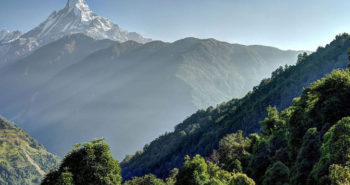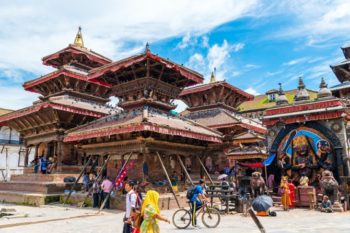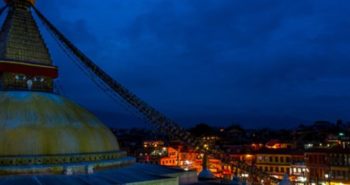How much does Annapurna Circuit Trek Cost?
You have read all about the Annapurna Circuit Trek. The diversity of the landscape and culture, and the beauty of the mountains. You have probably gotten a good idea as to how difficult (or not) this trek will be for you, with the highest point at 5,416m as you cross the Thorong La pass.
As long as you have a good fitness level, you know you can make it! Take our advice on acclimatizing and resting before going high (over 4,000m), keep yourself hydrated and well-fed, and you will love this adventure!
But what you might be unsure about is how much will this adventure cost you. Here we provide you with a breakdown of prices for food and accommodation, transport, hiring a guide or a porter and the main difference between going it alone (with a guide and/or porter) or going through a trekking company.
Visa Costs
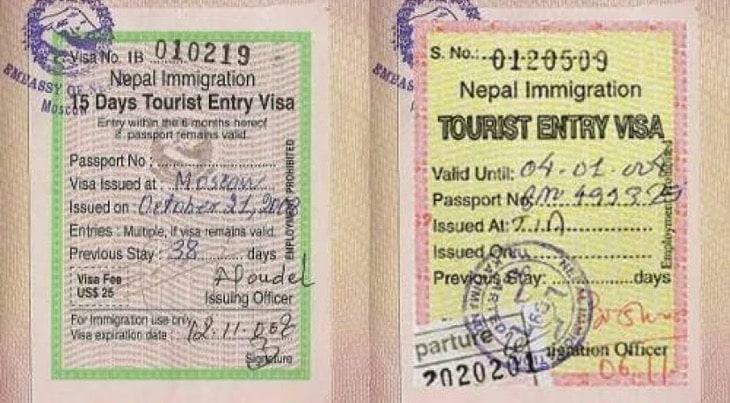
The first cost you will encounter is the visa for Nepal. Unless you are from India or China, you will be required to pay for a visa. You can get a visa on arrival at the airport in Kathmandu or complete the process online (and pay in the airport in Kathmandu).
The costs for visas are given below. All are multiple entries within the visa time frame. All payments are required to be made in convertible currency. US dollars are the best. And note there is no change given. Bring the correct money and a passport-sized photograph.
- 15 days: US$15
- 30 days: US$40
- 90 days: US $100
Visas can be extended up to 4 months at the Immigration Department in Kathmandu. A fifth month (in a calendar year) may be granted if you show a flight ticket out of the country.
For more information visit the Nepal Immigration Department website.
Trekking Costs
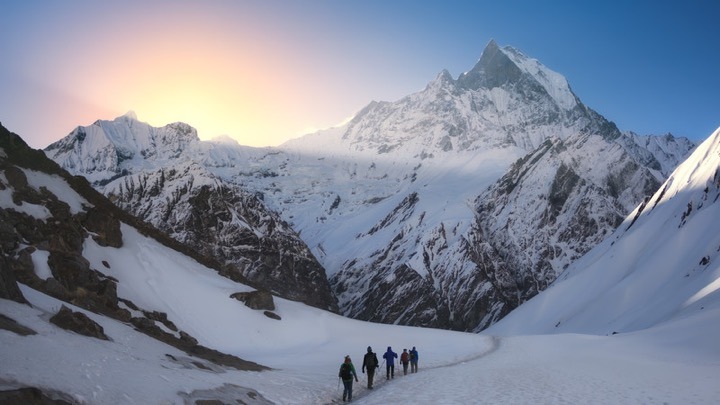
What is the cost of doing this Trek Through a Trekking Company?
Most of the trekking companies operate this trek in the $500 to $800 per person price range. With Magical Nepal expect to pay from $480 per person using buses.
You can upgrade the transport to private vehicles for an additional $110 per person. If you require a porter, it will cost you an additional $70 per person.
If you are choosing a trek operator with a lower price range, make sure to check their reviews!
How Much Do I Have to Pay for a Guide?
If you want to take a guide (as opposed to going with a trekking company on a regular trip) it will cost you around US$22-US$30 per day.
If you are hiring a guide do check he has a valid license issued by the Government of Nepal. Check his background and the reviews from past clients. An experienced guide will charge USD30 plus per day.
How Much Do I Have to Pay for a Porter?
Similarly, if you are hiring a porter, ensure he has the correct gear and is insured. Makes sure to hire your porter in Kathmandu or in Pokhara.
If you decide on the trail to hire someone, the cost will be much higher. Expect to pay USD20 per day in Kathmandu or Pokhara.
Cost of Transport for Annapurna Circuit Trek
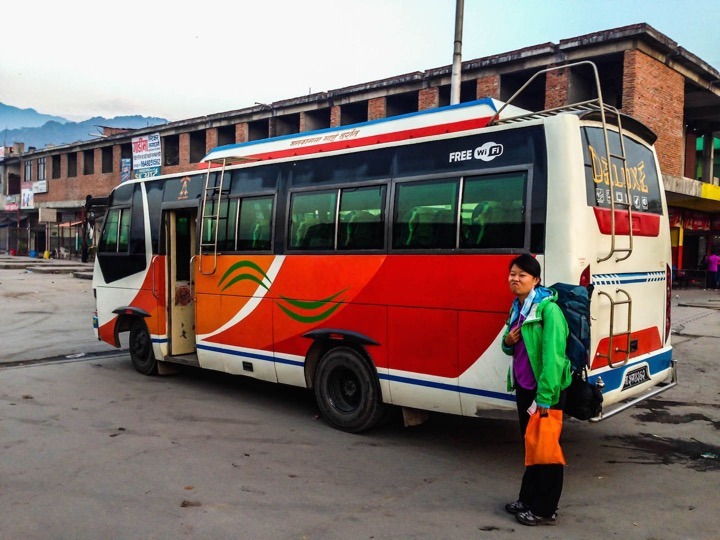
Getting There: Kathmandu-Besisahar
The cost of transport between Kathmandu and Besisahar (the road-head for this trek) varies depending on how you want to go there.
- By local bus: USD 10 per person approximately 6 – 7 hours
- By private car: USD110 per car 6 hours
If you want to do this trek clockwise (starting from Pokhara and ending in Besisahar) then you can fly to Pokhara from Kathmandu.
- Kathmandu to Pokhara by flight: USD110 per person (one way) 25 minutes
Again, going clockwise, you can fly from Pokhara to Jomson.
- Pokhara to Jomson by flight: USD110 (one way) 20 minutes
You can also travel by private vehicle from Kathmandu to Pokhara for $120 per car.
Which Form of Transport Should I Choose?
If you are starting the Annapurna Circuit Trek from Besisahar, there is no choice – you have to go by road. If you are 2 or 3 people then private transport is a good option as it allows you more flexibility (where to stop etc).
For those alone or on a budget, local transport is much cheaper. There are no tourist buses on this route.
If you are starting the Annapurna Circuit Trek from Pokhara then there are two flights available to you. From Kathmandu to Pokhara and/or from Pokhara to Jomson. You can also utilize these flights on the return journey if you are starting from Besisahar and ending in Pokhara.
Please be aware that if you start your trek in Pokhara, there is less time to acclimatize to the altitude. And particularly if you are flying into Jomson you should be very careful as you will be hiking higher faster.
Permit Costs for Annapurna Circuit Trek

Everyone needs a permit to enter the Annapurna Conservation Area and also a permit to trek in any area in Nepal This second permit helps ensure your safety (because your entry and exit is recorded at the various checkpoints along the trail)
The costs of these permits are as follows:
ACAP: NPR 3,000
TIMS: NPR 2,000
So, for both ACAP and TIMS permits you are paying around USD50 per person.
Food and Accommodation
On average, you will spend USD 30 to 40 per day on (basic) accommodation, breakfast, lunch, and dinner.
By basic accommodation, we mean a twin room with a shared common bathroom. Few lodges/ teahouses on treks have attached bathroom. The exception to this is on the lower trail from Jomson to Pokhara.
And within this price do not expect to be able to buy desserts or drinks. And remember that cold drinks and alcohol will be increasingly more expensive as the altitude increases.
We would suggest, that, if possible, you allocate USD 30-40 per person per day for food and accommodation.
Additional Costs
Be prepared for additional costs on the trek:
- Hot shower: USD2-3 per shower. Why? They are using gas to heat the water, which is expensive to bring to villages on the trek.
- Electricity (to charge phone etc): USD 1-2
- Local Sim card. Useful to call ahead to reserve accommodation and in emergencies. This can be easily bought at the airport or in Kathmandu. Rates for data packages, calls and texts are relatively cheap. US5 to US10 is enough for your trek unless you want to make a lot of international calls!
- Drinking-Water: USD1 per liter.
- Alcohol, soft drinks, and snacks: as per menu price.
- Tips for guides and porters.
- Equipment See below.
Cost of Equipment
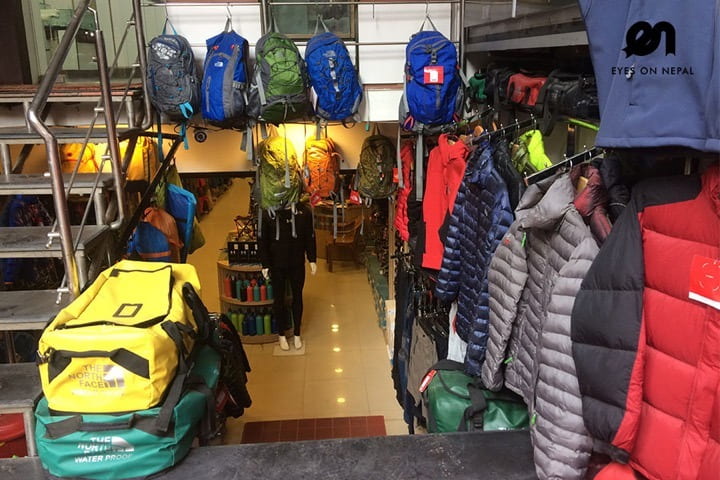
Logically you know you are not setting off on your trek in the same clothes you wear to the office or around the house. But this is an added expense that many people do not take into consideration when budging for their trip.
If you are not intending to do much trekking in the future, then you can rent equipment in Kathmandu. You can also buy equipment here (good for people who are on a larger travel plan).
The following are things we recommend you to buy or rent for your trek:
- Four season sleeping bag*
- Sleeping pad/ mattress*
- Warm jacket*
- Waterproof jacket*
- Trekking boots (if possible buy and wear these ahead of time to reduce the change of blisters!)
- Trekking poles*
- Trekking trousers
- Trekking shirts and/or t-shirts
- Warm gloves and thermal socks
- Day pack and main pack* (remember to pack light)
- Sunglasses, sunscreen, hat
The cost will be around $500 upwards depending on the quality. To rent the above items will cost around $1 to $2 a day. We do not recommend hiring trekking boots as they will be molded to another trekker’s feet and cause you blisters! However, renting a sleeping bag is very common.
For further information on the Annapurna Circuit Trek, or any other trek in Nepal, contact Magical Nepal.
